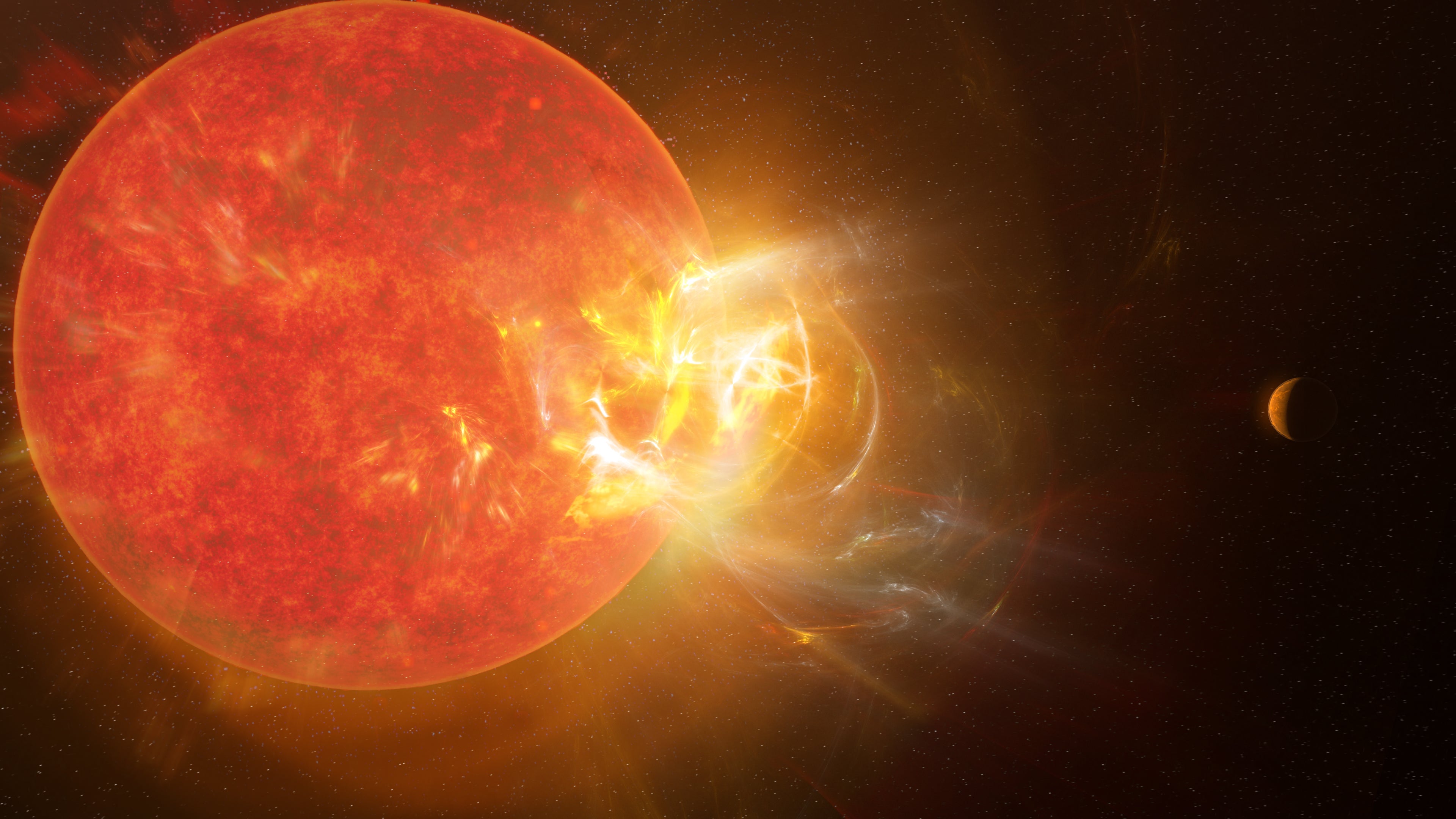Scientists see ‘extreme’ flare coming from our closest solar system

Scientists have seen an extreme and violent flare coming from our neighbouring solar system.
The vast blast came out of the star Proxima Centauri when it went from its normal brightness to 14,000 times that in the space of just a few seconds.
It was 100 times more powerful than any similar flare seen on our own Sun, and such flares are powerful enough to tear away atmospheres from planets and hit anything that might be living nearby with deadly radiation.
Scientists hope the finding could be an indication of new physics, informing our understanding of star’s behaviour as well as the search for alien life elsewhere in the solar system.
But in this case, the findings suggest that anything that is living next door is unlikely to look anything like us. The intensity of the blast and the star’s volatility would make life very difficult for
“If there was life on the planet nearest to Proxima Centauri, it would have to look very different than anything on Earth,” said Meredith MacGregor, a University of Colorado Boulder who worked on the study. “A human being on this planet would have a bad time.”
Proxima Centauri is our nearest neighbour, just four light years from our star, and is much smaller than our Sun but punches above its weight. It is only an eighth of the mass of our Sun, and is a red dwarf, belonging to a class of stars that are particularly small and dim.
It also hosts its own planets, including one called Proxima b that scientists say could be very similar to our own Earth. Its relative closeness to Earth – both in terms of distance and similarity – have led researchers to be excited about the possibility of finding alien life there.
But anything that does live there will have been blasted by the huge amounts of energy that were seen coming out of the star. It was one of the most violent flares ever seen anywhere in our galaxy.
That could be a problem for future searches for alien life. Many of the exoplanets that sit in the so-called Goldilocks zone around their star – neither too close and too hot, or too far away and too cold – are in orbit around red dwarves, which could pose a danger.
“A lot of the exoplanets that we’ve found so far are around these types of stars,” said MacGregor. “But the catch is that they’re way more active than our sun. They flare much more frequently and intensely.”
The flare was spotted by researchers who were conducting observations on the star over a period of 40 hours and using nine telescopes. They had not expected to see such an intense blast, but the research meant that they now have some of the most detailed data to be captured on such a phenomenon.
It was seen in May 2019 and lasted for only seven seconds. The flare was not especially bright in terms of visible light, but there was huge amounts of both ultraviolet and radio, or “millimetre” radiation, the researchers say.
“In the past, we didn’t know that stars could flare in the millimeter range, so this is the first time we have gone looking for millimeter flares,” MacGregor said.
But the flare might not even be especially rare at Proxima Centauri. Researchers saw multiple flares throughout their observations, suggesting both that they are potentially happening several times a day – and that there might be other kinds of flare yet to be found.
“There will probably be even more weird types of flares that demonstrate different types of physics that we haven’t thought about before,” MacGregor said.
A study describing the findings is newly published in The Astrophysical Journal Letters.
Join our commenting forum
Join thought-provoking conversations, follow other Independent readers and see their replies
Comments
Bookmark popover
Removed from bookmarks